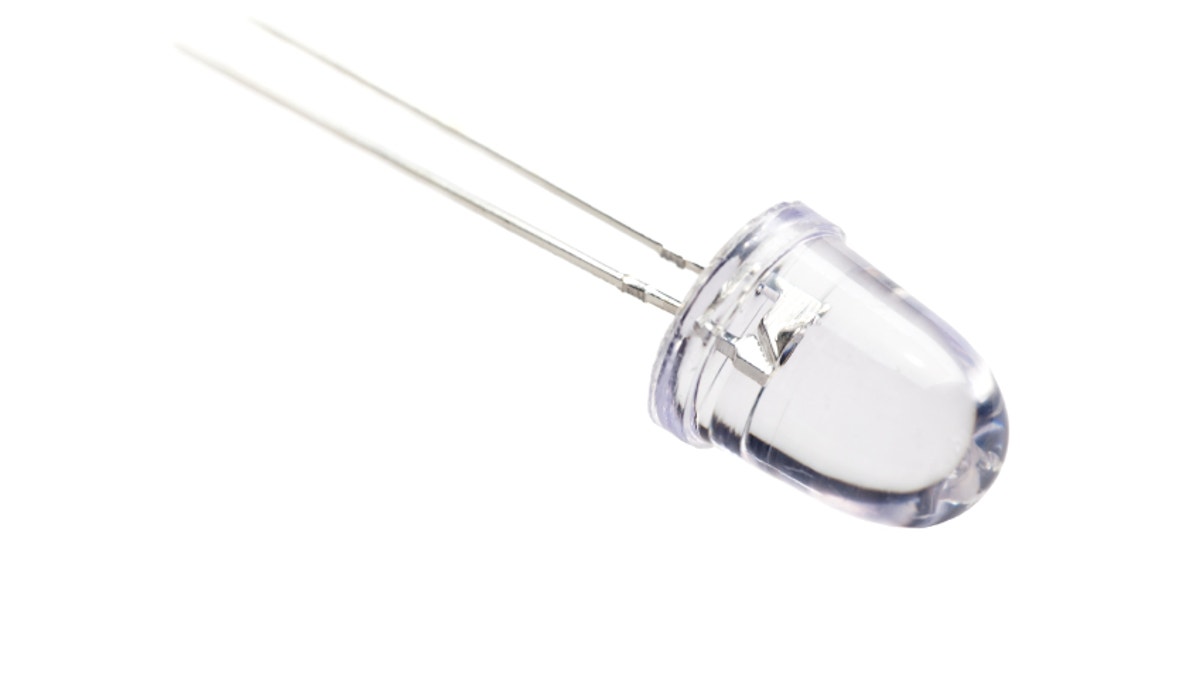
One LED light isolated on plane background.
Surgeons who were treating an infant girl likely had a light-bulb moment of their own when they realized the object they had just retrieved from the girl's windpipe was a light-emitting diode (LED) bulb she had inhaled.
The doctors had originally guessed that the item inside the 15-month-old girl's chest was her grandmother's hairpin, but the U-shaped object seen on the child's chest X-ray turned out to be an LED bulb, perhaps from one of the toddler's toys, according to a new report of the girl's case published online Aug. 26 in the journal BMJ Case Reports.
The object had lodged at the end of the girl's windpipe, close to the main passageway leading into her right lung, said Dr. Kenneth Wong, a pediatric surgeon at Queen Mary Hospital in Hong Kong, who co-authored the case report. An object in this location can block a young child's airway, and become a life-threatening medical emergency, he said.
Children between ages 1 and 3 are particularly vulnerable to swallowing small objects because they have a tendency to put things in their mouths, and may not have teeth capable of chewing the object before it slides down their throat, according to the case report. In addition, a reflex that normally protects young children's upper air passage may not be fully developed in infants. [9 Weird Ways Kids Can Get Hurt]
The girl was brought to the hospital emergency room in January 2012 because she was having trouble breathing, according to the report. Ten days earlier, she had developed a cough that lasted for a week, but she had no runny nose or fever.
Her pediatrician diagnosed her as having a cold and prescribed cough medicine to ease her symptoms. But after regularly taking the medicine for three days, the 15-month-old had become increasingly short of breath.
A chest X-ray revealed the object lodged near her right main bronchus. Judging by the image's shape and size, the child's grandmother suggested it could be a hairpin that she had recently lost.
Seeing the light
To get a better glimpse of the object, the doctors performed a procedure known as a rigid bronchoscopy, in which a long, lighted tube is inserted into the child's nose or mouth, allowing doctors to see inside the throat and lungs.
They saw two metal wires.
The doctors used forceps to remove one of the metal wires, but had more difficulty withdrawing the second. Eventually, they identified both objects as parts of an LED bulb.
The girl had inhaled the LED intact, Wong said. But the bulb got stuck as surgeons were attempting to retrieve it, so they had to take it out in pieces to minimize the damage to her airway, he said.
The girl's persistent cough had been a side effect of swallowing the LED bulb, and her shortness of breath resulted from the bulb obstructing her breathing, Wong told Live Science.
After the procedure, the young girl stayed for two days in the hospital to receive chest physiotherapy, which involved breathing and coughing exercises designed to help remove saliva and mucus from her respiratory tract. She was sent home with a prescription for a two-week course of antibiotics to prevent a chest infection.
Doctors last saw the toddler after she had finished taking her antibiotics, and she was in excellent condition with no sign of any long-term complications, Wong said.
Although cases like the girl's are rare there have been only two other cases of accidental swallowing or inhaling of LED bulbs reported in the medical literature LED bulbs can be a safety hazard for young children, especially as the use of them becomes increasingly popular in kids' toys and around the home, Wong said.
And the plastic component of the LED bulb is hard to detect on a chest X-ray, making it even more difficult for doctors to correctly identify a bulb if a child has swallowed one, the report said.
- 9 Odd Ways Your Tech Devices May Injure You
- 10 Scientific Tips For Raising Happy Kids
- Lightbulbs: Incandescent, Fluorescent, LED (Infographic)
Copyright 2015 LiveScience, a TechMediaNetwork company. All rights reserved. This material may not be published, broadcast, rewritten or redistributed.
